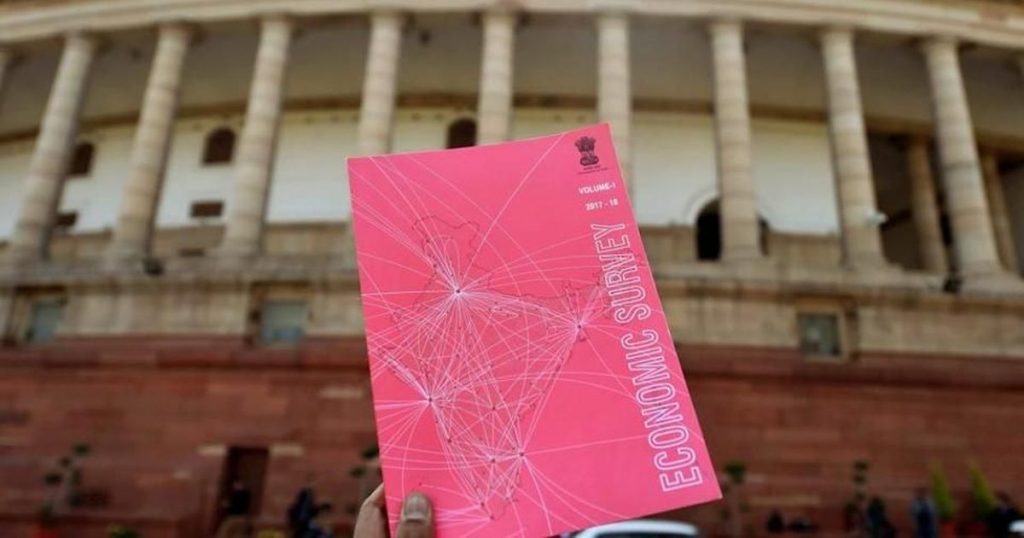
An Economic Survey is a document that surveys the economy in the financial year just past. So, it lists the issues confronting the economy and gives prescriptions for how to tackle these problems. Usually the solutions to the problems are presented in the Budget since resolution of problems requires allocation of resources which can only be done in a Budget. But most of the time the Budget does not follow the prescriptions in the Economic Survey. It is likely that this situation will not change this year as well.
The reason is, as the Economic Survey lists, the economy is confronting a deep slowdown with the rate of growth falling quarter on quarter and the rate of investment is not picking up, especially the private investment. It flags employment, situation of agriculture and MSME sector as major problems. These are the obvious ones and are also not new issues since these have been flagged by this author and subsequently by many other analysts in the last more than two years. What is new is that the government was in denial about many of these issues but the Economic Survey has finally admitted the problems and made those official.
If one is in denial then one also does not solve the problems and that is what has been happening in the Indian economy. For instance, in the last year’s Budget a high rate of growth was assumed so that the tax revenues were projected to rise strongly. Since the rate of growth turned out to be less, revenue collection was short and that made the Fiscal Deficit to rise but to contain it at the level of 3.4 per cent essential expenditures were cut. This aggravated the demand problem further and slowed down the economy. Similarly, in the Interim Budget, the revenues were projected to grow strongly based on a high rate of growth. Now it is clear that this was an incorrect assumption and revenues will not rise as projected. This would throw the budgetary calculus off the mark. So the extra expenditures on kisan scheme, pension for the unorganised workers and the tax concession for the lower middle class will either not be fully funded or other essential expenditures will be cut or the fiscal deficit will rise.
The Economic Survey needed to throw light on the current controversy about data whether it is growth of the GDP or the level of unemployment. If one does not base the Budget calculation on the current growth figures then again the budgetary calculus would go off. Credibility of Indian statistics has been severely damaged in the last one year because of the government being in a denial mode. It denied whatever it found to be politically inconvenient.
So, the employment data from PLFS was denied and the government went to the extent of saying there is no good data on employment. It had high hopes from the data on Mudra Loans but it refused to release it in February when the data became available. As this author pointed out, if good data on employment is not available, then the GDP data, which depends on employment data, will also be suspect. So, after the elections the PLFS data was released but the Mudra data has not yet been released. The data on farmers’ suicide collected by the Police Crime Bureau has not been released after 2016.
It was important for the Ecoomic Survey to restore the credibility of the Indian data but this has not happened since a proper analysis is not presented. Further, the oft-repeated target of almost doubling India’s GDP to $5 trillion in the next five years is now again repeated. When it is said in doller terms it means the real GDP, and not the nominal GDP, is to be doubled. The nominal term does not make sense since one can then achieve the target by creating inflation in the economy. Further, if the GDP is doubled in nominal terms, the rupee would devalue against the dollar and the goal of $5 trillion would not be achieved.
If it is accepted that the economy has to almost double in size in five years, it would imply an average rate of real growth of about 11.5 per cent per annum. Since one is starting on a base of 5.8 per cent this quarter and a likely lower growth rate next quarter, to achieve an average growth rate of 11.5 per cent over the next five years in the last quarters, the rate of growth would have to turn out to be about 17 per cent—an impossible task. Even achieving a 10 per cent real growth is difficult in the present circumstances. Trying to argue that India would work towards this goal would be unrealistic and would further dent the credibility of the government.
The Economic Survey correctly identifies the key economic problem as a demand problem and therefore it talks of a proper minimum wage for workers. It talks of raising investment in the economy and so on. It also correctly argues that the savings rate has to go up which it will if incomes rise and the rate of growth goes up. But it does not follow through with the argument of demand shortfall and slips into suggesting solutions based on supply side and structural reforms.
It talks of incentivising the corporate sector and land and labour reforms among other things.
It also talks of the reform of the financial sector which has faced a big crisis since the NPAs of the banks have been properly identified after 2015. An even bigger crisis has erupted last year with the IL&FS failed and now other NBFCs, like Dewan Housing Finance Company, are defaulting on their loans.
But it needs to be remembered that these structural policies have little to do with the Budget and could be announced independent of the Budget. Only any direct subsidy to the banks or their increased capitalisation (recapitalisation) need be in the Budget. Labour in the unorganised sector is already unprotected so that it is on the basis of ‘hire and fire’. Only six per cent of the work force is unionised and does not have hire and fire. Yet the economy does not generate enough jobs; so it is not labour reform which is to blame. It is the degree of automation that needs to be looked at to see how one can increase employment.
Tax cuts for the corporates will not spur investment since it will not change demand in the economy. Thus, instead of tax cuts, the government needs to think of how to raise resources and increase capital spending and support to social sectors, like education and health and rural infrastructure. The GST has a structural problem which is plaguing the unorganised sectors of the economy. As this author has been pointing out, it is not just an implementation issue that confronts the GST. An alternative GST is required to give a boost to the unorganised sector of the economy.
The Survey also talks of stimulating exports and lowering the cost of capital by lowering the interest rates. The RBI has cut rates twice with little stimulus to the economy due to low capacity utilisation. Exports are uncertain given the global uncertainty due to actions of Mr Trump—trade war, sanctions against Venezuela and Iran, etc. Hence these are not the solutions to the current problems.
The supply side and structural reforms will take a long time to have effect on demand, if at all. The need at present is to raise demand in the short run. Then investment will go up as capacity utilisation rises in the economy. So, a stimulus is needed. Even if the fiscal deficit rises by half a per cent it is not going to lead to inflation since there is spare capacity and foodstocks.
In brief, while the Survey admits the issues confronting the economy, it does not follow through with the appropriate solutions to these problems.
(The author, an eminent economist, is the Malcolm Adiseshiah Chair Professor, Institute of Social Sciences, New Delhi. He is the author of Indian Economy Since Independence: Persisting Colonial Disruption, published by Vision Books.
He can be contacted at e-mail: [email protected], and [email protected])
Courtesy : Mainstream, VOL LVII No 29 New Delhi July 6, 2019.










































